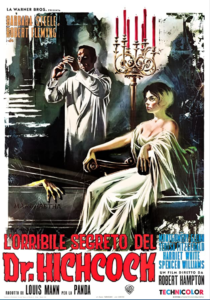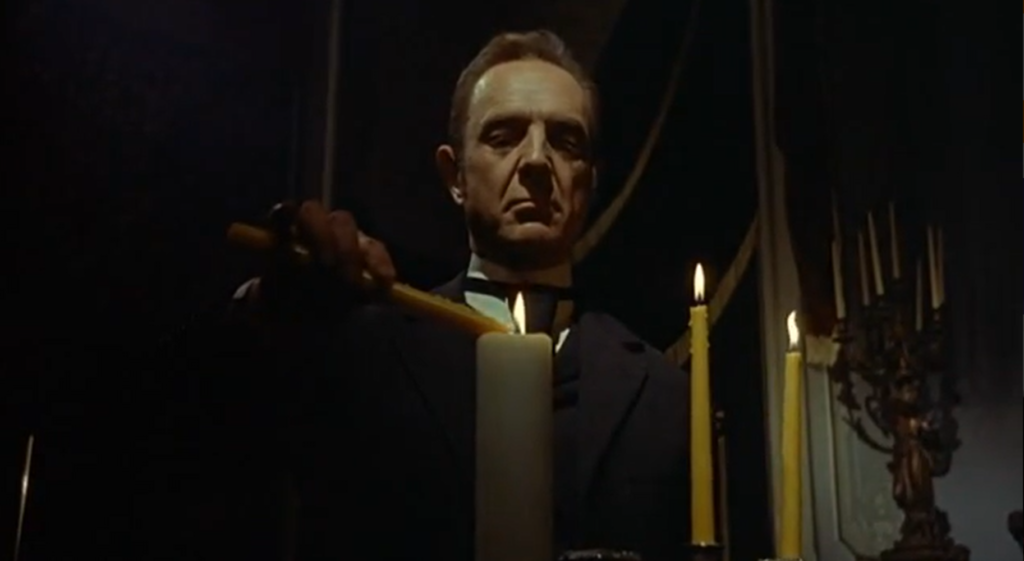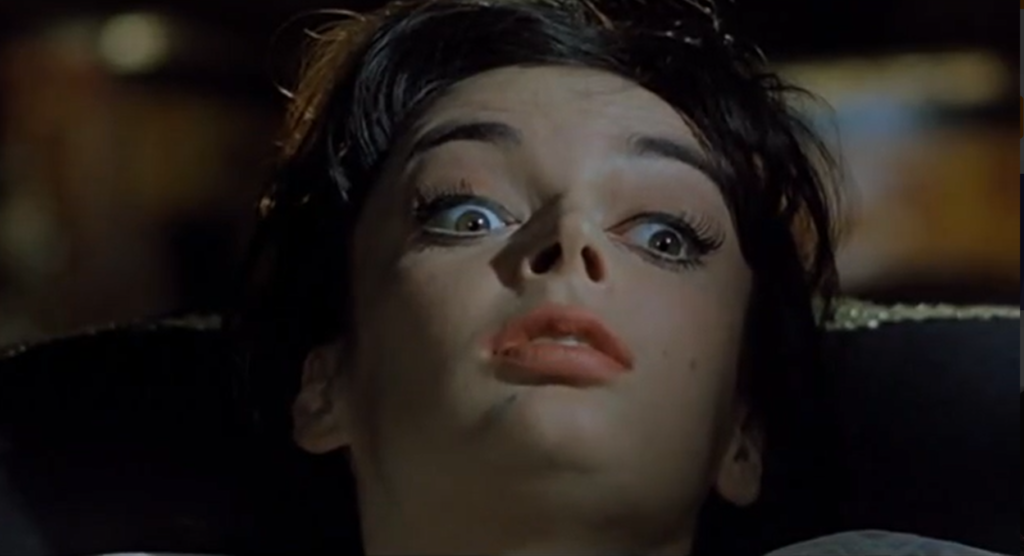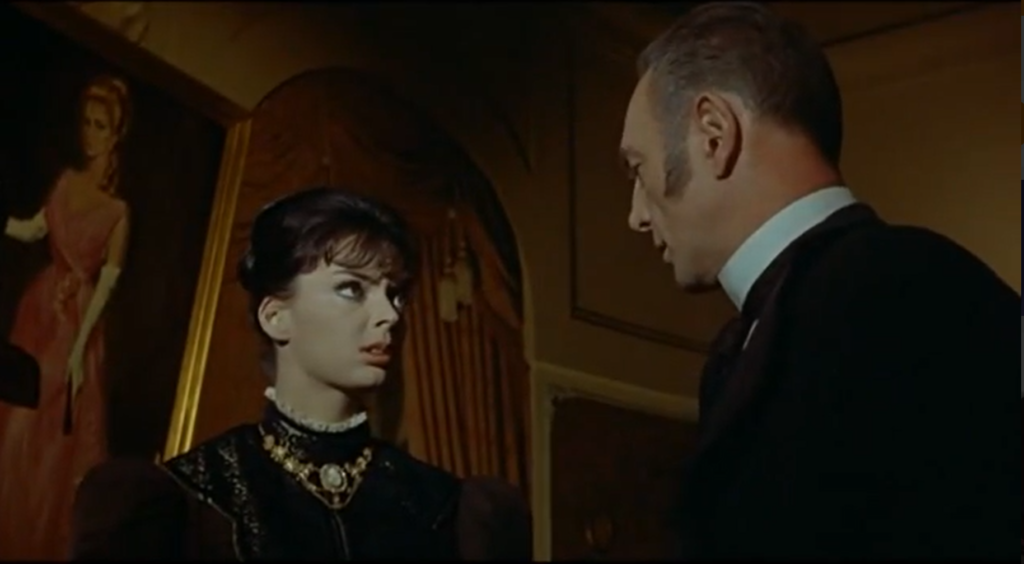“Death will take you in your sleep — in your sleep!”
|

Synopsis:
When necrophilic Dr. Hichcock (Robert Fleyming) accidentally kills his first wife (Maria Teresa Vianello) by injecting her with too much anesthesia, he leaves home, returning 12 years later with a new wife, Cynthia (Barbara Steele). Cynthia soon believes that Margherita (Vianello) may be haunting the premises, and intent on killing her — but cannot get her husband to believe her.
|
|
Genres, Themes, Actors, and Directors:
- Barbara Steele Films
- Ghosts
- Horror
- Mad Doctors and Scientists
- “No One Believes Me!”
Review:
This beloved, controversially-themed thriller — starring wide-eyed Barbara Steele, the lead in Mario Bava’s classic Black Sunday (1960) — is regarded by many as a staple of Italian gothic horror. As noted in Richard Scheib’s Moria review, however, it ultimately relies too heavily on genre cliches and moody atmosphere at the expense of both plot and character development. In particular, Dr. Hichcock’s motivations towards his new wife don’t make much sense, and eventually the story begins to feel like merely an exercise in spousal persecution, with strong echoes of Hitchcock’s Rebecca (1940) — probably an explicit homage, given the lead character’s name.
Redeeming Qualities and Moments:
- Robert Flemying as Bernard Hichcock

- Several effectively scary moments — as when Cynthia’s cries for help are muffled through the glass top of her coffin

- Atmospheric cinematography and production design

- A majestic musical score by Roman Vlad
Must See?
No, but it’s worth a look for its status as a cult favorite.
Links:
|
2 thoughts on “Horrible Dr. Hichcock, The (1962)”
It may very well be a cult favorite – but it’s not a must. All told, it’s tedious. At best, necrophilia is a ponderous undertaking (if you will) – here, it’s given way-too-ponderous treatment.
And the result is vague to boot. Though the subject matter was no doubt scandalous in its day, the approach here is so tentative that the film might just as well be called ‘The Possibly Somewhat Naughty Dr. Hichcock’.
It’s filmed like a Corman quickie; like the more feeble of those, it’s poorly acted and, at times, unintentionally amusing (if not funny). It also boasts an overbearing score that almost seems to be the main character. And it’s also a bit confusing, tho I believe I saw a complete print.
There is one truly bizarre shot near the end, when Hichcock is caught in the act and, thus, undone: that face! As well, the image of the wife alive in the coffin will put some ffs in mind of a more terrifying, more contemporary horror entry: ‘The Vanishing’ (the original 1988 Dutch film, not the tepid American remake by the same director).
For various reasons, fans of ‘Young Frankenstein’ may wonder if ‘THDH’ was an influence.
I was ambivalent in my “yes” vote on this one, and would very happily change it to a “no”; truth be told, I don’t have much of an impression about it even a few months later (though whenever I look at the still I captured of Flemying, I keep seeing my friend Robertson Dean). What’s surprising to me is how much others find to love and analyze in this cult flick — for instance, in the “And You Call Yourself a Scientist!” review, Lyz states, “Viewers willing to suspend disbelief and give themselves up to the mood of these films may well reap a very rich reward.” I didn’t quite see it — though I loved reading her review!